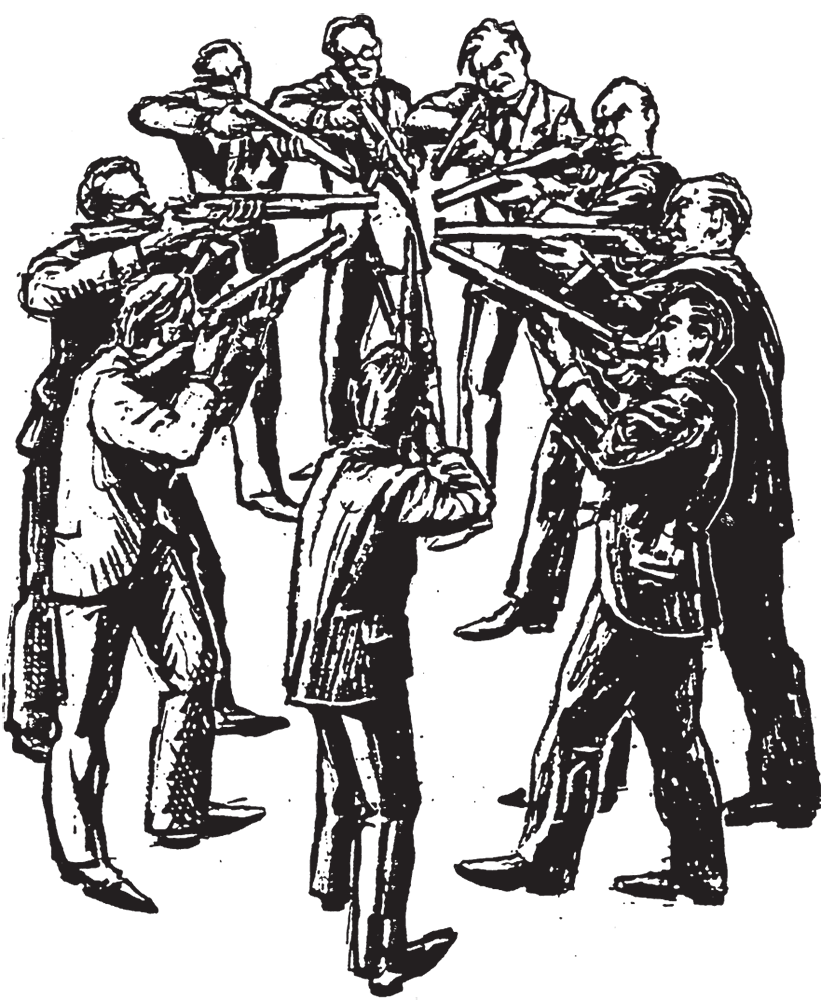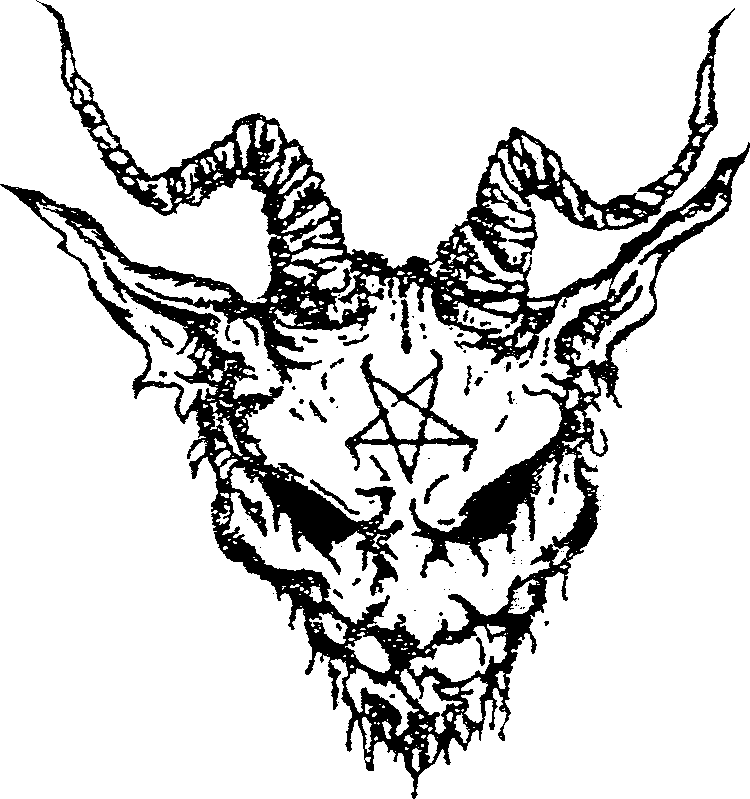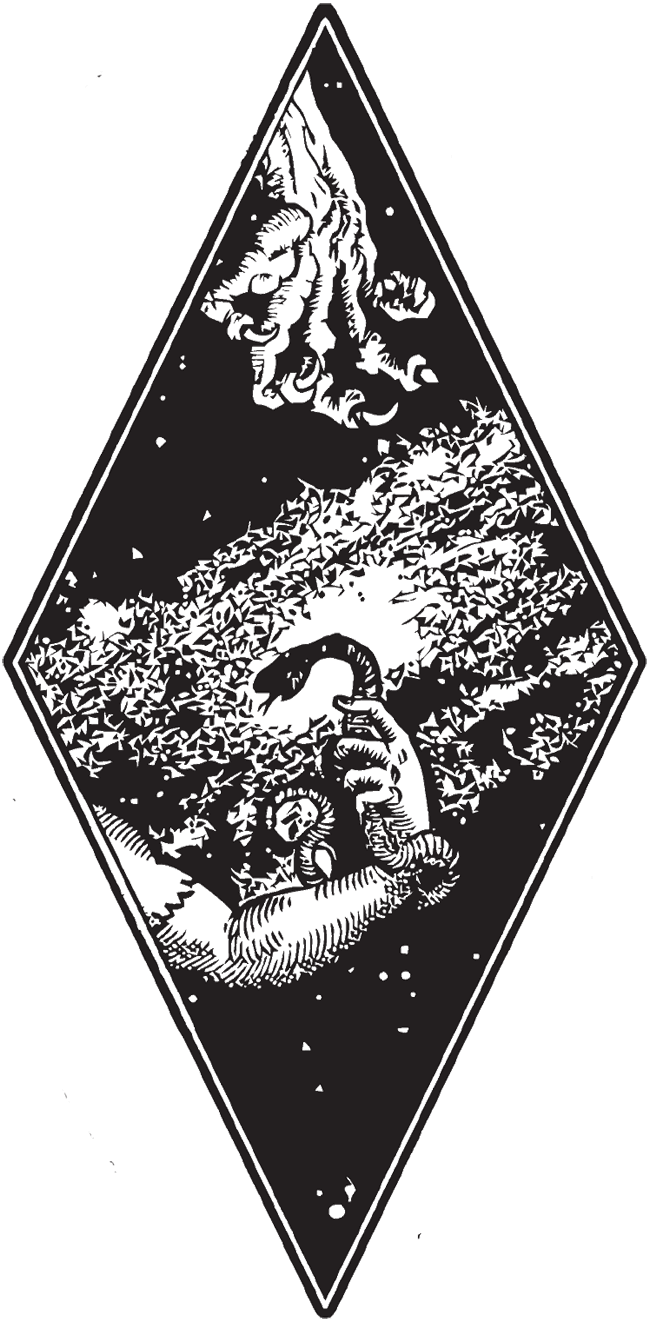Nuclear War Now!
2019-11-21
by Niklas Göransson
Yosuke Konishi, proprietor of American label Nuclear War Now!, discusses black metal aesthetics, his devotion to the physical product, as well as the challenges of meddlesome interference facing the underground scene.
The following is an excerpt from the full article, which is twice as long and published in Bardo Methodology #5. The same issue also includes conversations with BLASPHEMY, DAUTHA, CLANDESTINE BLAZE, ACRIMONIOUS, ROME, LYCHGATE, MORBOSIDAD, Cult Never Dies, MYSTIFIER, W.A.I.L., WINTERFYLLETH, and PHURPA. Note that this interview took place before the 2019 edition of Never Surrender Fest, which is the reason why there’s no mention of the events surrounding it. Furthermore, when asked, Yosuke stated that the NWN! forum is not coming back.

– Aesthetics have always played a substantial role in metal, maybe more so than a lot of other genres, and that’s part of what drew me to the music. Dark and evil visuals have captivated me for as long as I can remember, as I’m sure is the case with most metal fans. I can’t really explain why, it’s just always been that way. I even recall moving to the United States and feeling as if the national imagery here was too saccharine and banal compared to what I observed in my homeland. Not only from contemporary Japan but throughout the nation’s history; the rigorous aesthetics of its feudal age carry over to the present, albeit in modified forms, and there’s always a sort of inherent martial nobility in Japanese aesthetics.
As was mentioned in our July 2017 conversation, Yosuke is a family outlier of sorts in that he drifted toward science and mathematics, whereas all of his closest relatives are extremely artistically oriented. For example, both Yosuke’s father and grandfather were specialist woodcut printers, his mother prints lithographs, and his older sisters work with oil painting as well as photography and pottery.
– I was also the youngest member of my family when we came to the United States, so perhaps I absorbed more of the American influence – indeed, my mother and sisters have all since returned to Japan. I became interested in music when I was very young; my sister used to play DEVO a lot and that was one of the first bands I remember liking to the point where I’d actively seek them out. And, of course, very few acts have ever created a more unique and comprehensive aesthetic matrix for their music. I really liked that, they paid attention to every last detail. The music was the centrepiece but still deeply entwined with their imagery and concept; that unity of purpose in every facet of the presentation really struck a chord with me.
Formed in 1973, DEVO is an American rock band who attained mainstream popularity with their 1980 single “Whip It”. Besides the actual music, the band is known for extravagant stage shows featuring theatrical and visual components in science-fiction themes.
– A few years later, when I was in my teens, I started collecting punk and hardcore records. But it wasn’t until encountering death metal I really began recognising that same interrelationship between the sonic, visual, and conceptual – and this time in the service of a far darker aesthetic than DEVO, drawing me in even deeper. By the time I got into black metal, I knew that there was no greater aesthetic expression of visceral evil intent. After years of pure obsession with the more extreme elements of underground metal, I decided to start a label.
Nuclear War Now! Productions was founded in 2001 – back when most global black metal interest was still fixated almost exclusively on Norway, despite its scene having just undergone a full-scale collapse. Yosuke wanted no part of it and opted to focus on the more bestial and barbaric side of things, with bands such as BLASPHEMY, BLACK WITCHERY and MORBOSIDAD.
– Looking back, it makes sense I’d start a black metal label because it draws upon all of my skills and interests. The analytical part of my personality focuses on the business side, whereas all creative impulses are channelled into its aesthetics. As far as characteristic features go, I try to always maintain a balance between tradition and innovation. Metal is a conservative genre in that it reveres tradition; those trying to be too iconoclastic tend to be useless garbage. Unfortunately, there’s more and more of that rising to the surface these days – new bands comprised of members who haven’t spent enough time really studying and appreciating the genre’s progenitors. I didn’t want to give my label too many set constraints or force myself to adhere to some sort of template. I have allowed space for some aesthetic experimentation, as long as the final result tends to simultaneously invoke something of the genre’s roots.
Ever since I was a teenager, cover artwork has been extremely important as I always bring the album’s visual representation into my listening experience. As discussed with Paul Ledney in #4, PROFANATICA’s “Tormenting Holy Flesh” is perfect as an early case study; the contrasting white surroundings with derelict deviants in the centre. There’s also a tangible sense of primal filth over their naked photos, which in turn resonates with and enhances this warped and perverted feel of the music. The CONQUEROR and REVENGE style of militaristic simplicity is another fine example of what can be achieved with tastefully applied minimalism combined with sonic savagery.
– First of all, I completely agree regarding PROFANATICA. All of their early tapes and EPs really embody the simplicity of style and imagery that drew me to metal in the first place. When I started the label, Photoshop was becoming much more affordable and widely available which in turn fundamentally changed the nature of graphic design. By the early 2000s, it was fairly easy for just about anyone to create an LP layout and it seemed that just about anyone was doing so; as a result, there was a flood of amateur looking garbage released in the 2000s. Crude and tasteless Photoshop effects became the norm; I was appalled by the way so many of those records looked at the time. Every single metal release I picked up, it seemed, had garish shadow effects around the text.
At the time, Yosuke didn’t know anything about the technical side of graphic design – not even the very basics of working with image software. But he knew that the best metal aesthetics had all been created in the 1980s and 1990s, mostly by hand, long before the average person had a personal computer at home.
– I wanted to capture some of the simplistic essence of the best metal designs from the pre-computer era. Of course, like everyone else, I used computers a lot back then. I knew a few people who were skilled with Photoshop and other design programs and would try to convey to them my ideas. I mostly relied on their skills to clean up old images or extract single elements to repurpose elsewhere. I tried avoiding overt effects which weren’t available in the 1980s and 1990s. In the very beginning, I actually did a lot of stuff by hand using a copy machine. For instance, the Die Hard editions of BLASPHEMY “Live Ritual”, ABIGAIL “Intercourse and Lust”, and VON “Satanic Blood Angel” all contained cut-and-paste ’zine-style booklets and flyers that I copied at the office job I had back then. I’d head into work incredibly early, before anyone else got there, and run off hundreds of pages of copies. I sometimes even assembled and stapled them at work.

Any favourites of the early era?
– Probably the creation of MORBOSIDAD’s self-titled debut cover. Anyone who’s seen the original Quadrivium CD version knows how atrocious and ill-suited that artwork was. The design I ended up using came from an old gig flyer for a show MORBOSIDAD played with some other bands – I think TRANSMETAL and RESUSCITATOR – an approximately one and a half inches tall skull from a larger segment of border art. I used the copy machine to enlarge the image, then a black marker and Wite-Out to isolate the skull and touch up the details before copying it over again. It was a painstaking process but I was really proud of how it turned out in the end. The back cover was loosely inspired by SODOM’s “In the Sign of Evil”.
Yosuke adds that in the decades since, he’s become more dependent on computers to complete the design work but still tries to adhere to his original intentions and avoid the use of blatantly obvious digital effects.
– By now there are so many artists, labels, and designers that it’s quite difficult to carve out a niche for oneself. Nevertheless, there are certainly some current designers and labels that still manage to be innovative. I really admire the work of Stefan Thanneur from Chaos Echoes, for instance; his art and sense of design are truly remarkable. Of course, I’ll always admire the primitive efforts of artists like Chris Moyen and Rok. As metal becomes more popular, increasingly sophisticated artists are altering the aesthetic landscape. Denis Forkas is a true visionary and I was honoured to have him do the cover for WRATHPRAYER’s LP. Timo Ketola and Paolo Girardi are both incredibly impressive, their work continues to seem fresh and ground-breaking despite the fact that both seem to be widely used in the scene. I also really admire the unique aesthetic ideas of Haasiophis from ANTEDILUVIAN and H.W.C.T. from BONE AWL, both of whom have very interesting styles which really suit the sound of their music.
I’m curious how much importance Yosuke places on personal aesthetics such as attire. Just as the accompanying artwork is hugely important for the album experience, it could be argued that the metal uniform promotes a sense of connectedness among concert attendees – similar to the function monk-robes serve in monasteries. Perhaps such feelings are diluted when there are people breaking the dress-code by wearing ‘normal’ clothes, thus detracting from the immersion.
– I suppose I’m somewhat ambivalent about the role of personal aesthetics. On the one hand, as a fan, I love seeing old photos of bands like SARCÓFAGO or MORTUARY DRAPE or SADISTIK EXEKUTION; bands that cultivated a really genuine personal image to go with the music. You can tell it was a direct extension of their sound. But, on the other hand, I guess I don’t personally adhere to a very rigid sense of personal aesthetics. Despite all the patches I’ve made, sold, and even collected through the years, I haven’t worn a jacket with patches on it in over a decade. I’m very simple and utilitarian in that sense; I don’t really gravitate toward a heavy-handed personal image. I don’t find these tribal elements totally essential and, while I recognise and appreciate that aspect of the scene, it isn’t something I feel very personally invested in – at least not at this point. I recognise its value though and this has always been part of what motivates me with the label. Going to shows was very important to me when I was younger, as it is for most young metal fans, but even back then I was never especially social within the crowd.

Do you still go to gigs?
– At this point I seldom go out to local shows and when I do, I’m often just standing behind a merch table selling records. It’s unfortunate because I think there are a lot of very good live acts out there now. In fact, I’d venture to say that many newer bands are potentially better in concert than on record. There’s often a greater energy in the stage performance. But I’m frequently forced to skip shows I’d otherwise wish to see only because my schedule does not allow much room for late nights out. I work almost every day from dawn until night in order to maintain the label, so I have to keep my life very precisely regimented. I realised at some point several years ago that in order to sufficiently dedicate myself I had to sacrifice much of my social life, so shows became a lesser part of my routine. This is one reason why I enjoy the fests that Iron Bonehead and Nuclear War Now! arrange in Germany, such as Never Surrender; it’s one of the rare occasions when I can forget my other responsibilities and truly appreciate the live shows put on by bands for which I have deep respect.
In a 2018 conversation with O.T. of Quebecois black metal act AKTISA and underground label Tour de Garde, he observed how the limited cassette raw black metal phenomenon is the latest craze, implying that many of these wouldn’t evoke quite as much interest if it wasn’t just for them having been made artificial rarities.
– Ever since CDs became the predominant format in the 90s, I’ve felt like cassettes were best served for demos and not albums. I liked the idea that tapes were more of a stepping stone to the complete album recording. I even recall how, maybe a decade ago, there was talk of audio tapes about to disappear, much like VHS. I think the resurgence of interest is, in large part, due to the increased costs of vinyl and perceived inferiority of CDs. LPs have become increasingly expensive to produce and, because it’s so easy to put out a record these days, there’s an immense amount of competition which leads to further inflated prices. CDs have fallen out of fashion for now. I think that’s got something to do with the fact that the audio found on compact disc is indistinguishable from the digital version available online. At least in some theoretical sense, records and tapes offer a slightly different sound experience, although I’m not sure the average listener would be able to really articulate how. But tapes have become the cheap alternative allowing listeners to own a physical copy of the music without having to buy the more expensive vinyl version. While there’s definitely a ‘cult appeal’ factor based on the perceived limitation of tapes, I think it’s often just a matter of economics for labels and fans.
He points out that with the reduction in income due to material sales, many bands have taken to playing more shows and really focusing on their live performances. Musicians and labels alike are now concentrating more on the quality of their physical releases, even t-shirts and other accessories.
– This is all for the best. There are many fans now who, by preference or economic necessity, don’t pick up records, CDs, or tapes with the same consistency as they once did, but they still buy shirts and attend shows and, most importantly, listen to the music. They’re not necessarily any less sincere in their appreciation and, in actuality, the kid who streams an album a thousand times online and then buys a t-shirt is arguably more of a fan than those paying exorbitant costs to buy an original press of a record they only infrequently listen to. So, these are all very real developments to the industry at large and they’ve substantially impacted the underground. There’s good and bad to be found, but it’s sort of irrelevant since these changes appear to be here to stay. I’m just going to continue providing the same quality of releases I always have. I won’t ever give up on the value of the physical format and hope there are always some fans who feel the same way.
–
This was an excerpt from the full article, which is twice as long and published in Bardo Methodology #5. The same issue also includes conversations with BLASPHEMY, DAUTHA, CLANDESTINE BLAZE, ACRIMONIOUS, ROME, LYCHGATE, MORBOSIDAD, CULT NEVER DIES, MYSTIFIER, W.A.I.L., WINTERFYLLETH, and PHURPA.



